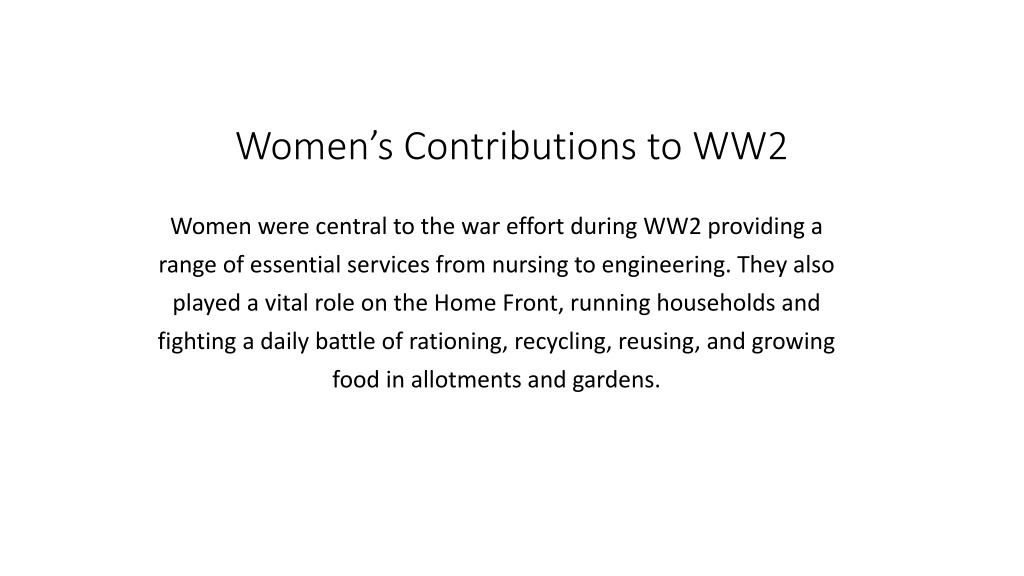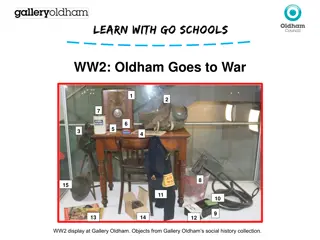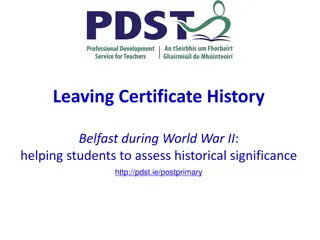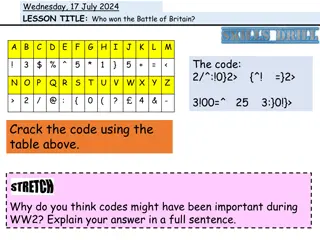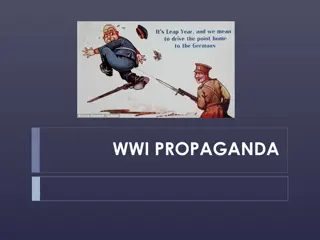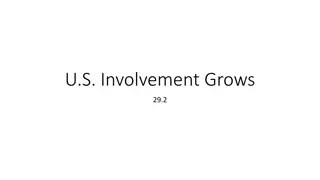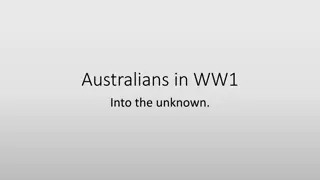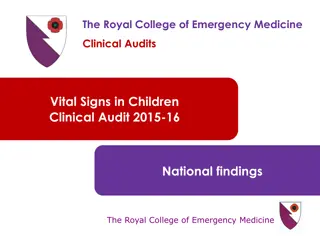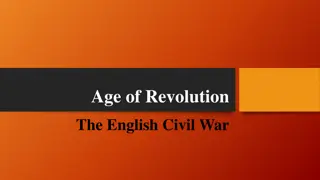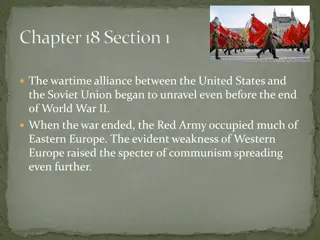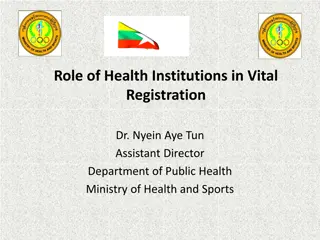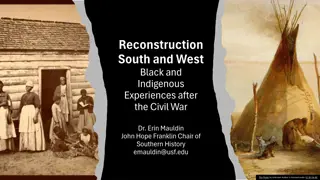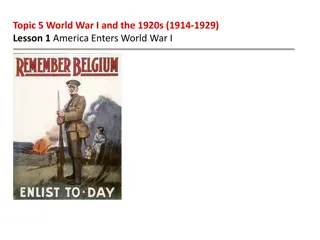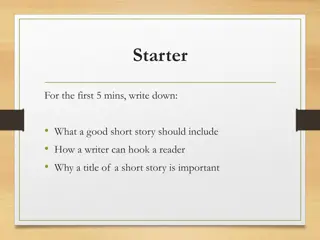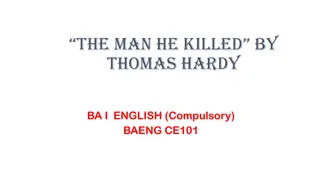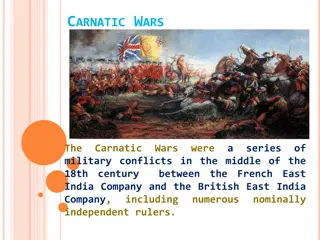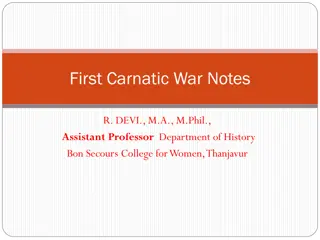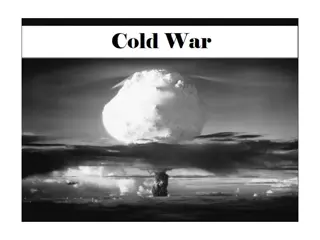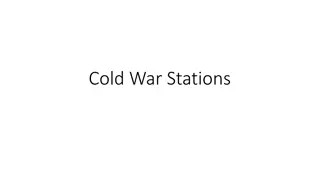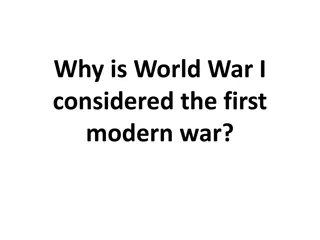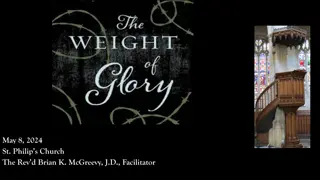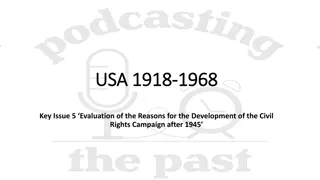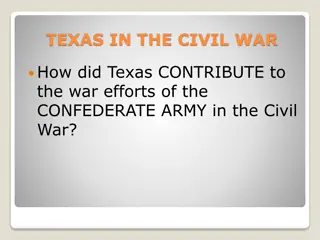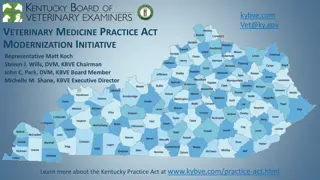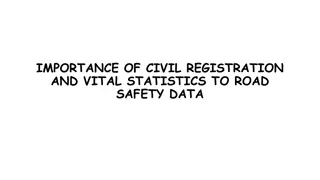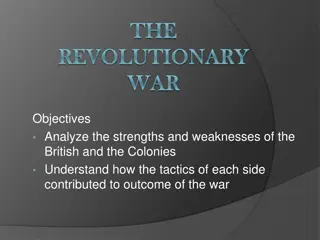Women's Contributions to WW2: A Vital Role in the War Effort
Women played a crucial role during WW2 by providing essential services, working in factories, serving in the Armed Forces, and engaging in various wartime activities both on the front lines and at home. Their contributions were diverse and impactful, ranging from mechanics, engineers, munitions workers to secret operatives and code breakers.
Download Presentation

Please find below an Image/Link to download the presentation.
The content on the website is provided AS IS for your information and personal use only. It may not be sold, licensed, or shared on other websites without obtaining consent from the author. Download presentation by click this link. If you encounter any issues during the download, it is possible that the publisher has removed the file from their server.
E N D
Presentation Transcript
Womens Contributions to WW2 Women were central to the war effort during WW2 providing a range of essential services from nursing to engineering. They also played a vital role on the Home Front, running households and fighting a daily battle of rationing, recycling, reusing, and growing food in allotments and gardens.
What did Women Do? What did Women Do? From 1941, women were called up for war work as mechanics, engineers, munitions workers, air raid wardens, bus and fire engine drivers. At first, only single women, aged 20-30 were calledup, but by mid-1943, almost 90 per cent of single women and 80 per cent of married women were working in factories, on the land or in the ARMED FORCES!
It was NOT just men that were in the Armed Forces! It was NOT just men that were in the Armed Forces! There were more than 640,000 women in the Armed Forces, including The Women s Royal Naval Service (WRNS), the Women s Auxiliary Air Force (WAAF) and the Auxiliary Territorial Service (ATS), plus many more who flew unarmed aircra. and drove ambulances. The WRNS were involved in some of the most secret planning for D-Day.
Did you know? During WW2, 10,000 women worked at the Rolls-Royce factory in Hillington, Glasgow, building the Merlin engines that powered Spitfires and the Lancaster Bomber. The Women s Land Army trained teams of girls as Anti-vermin Squads . Their job was to protect the food and crops growing in the fields from pests such as rats and foxes. There were thought to be 50 million rats in Britain during WW2! In the Special Operations Executive Winston Churchill recruited around 60 women to set Europe ablaze . They were deployed behind enemy lines, usually by parachute or fishing boats, to help form a secret army of resistance fighters preparing the way for the Allied invasion.
Top Secret Many women worked at Bletchley Park in Buckinghamshire helping to intercept German communications, crack codes and operating the most advanced technology in the world. Their work was top secret and remained so for many years following the war.
Choose a Learning Activity: 1 Research how many different organisations could women join and what sorts of tasks would they be doing? 2 Create a propaganda poster encouraging women to contribute to the war effort. 3 Research at some of the different WW2 uniforms for women and design a new uniform for one of the women s services. Think about the kind of work they would be doing and what sort of colour(s) the uniform would be. OR sketch some of the original uniforms-don t forget to colour them in. (More ideas for learning activities on the next slide.)
More Learning Activities 4. Research what happened to women in work following VE Day? Or when the troops started to come home? Did they keep working? Did they return to the home? How would this affect them? 5 Write a diary entry for a woman working in a munitions factory. What would the conditions have been like? Would it have been hard work?
